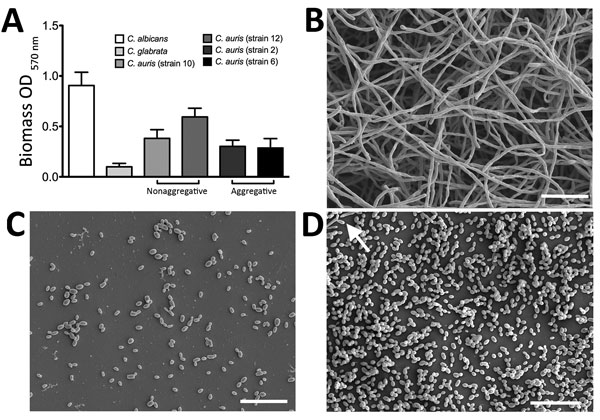Volume 23, Number 2—February 2017
Dispatch
Biofilm-Forming Capability of Highly Virulent, Multidrug-Resistant Candida auris
Figure 1

Figure 1. Biofilm formation on Candida auris, C. albicans, and C. glabrata yeast strains. A) Biomass quantities were determined spectrophotometrically for 4 strains of C. auris and 1 each of C. albicans and C. glabrata. Isolates were standardized to 106 cells/mL in RPMI-1640 and grown in flat-bottomed 96-well microtiter plates for 24 h at 37°C. Biofilms were then washed, stained with crystal violet solution, and quantified. Data represent the mean ± SD of experiments performed on 3 separate occasions, using 8 replicates for each strain. Results show that C. auris can form heterogeneous intermediate biofilms. B–D) C. albicans (B), C. glabrata (C) and C. auris (D) were also grown on Thermanox coverslips (Thermo Fisher Scientific, Paisley, UK) for 24 h at 37°C. Biofilms were then processed and viewed on a JEOL (Tokyo, Japan) JSM-6400 scanning electron microscope; images were assembled using Photoshop software (http://www.photoshop.com/products). Arrow indicates pseudohyphae in C. auris biofilm (D). Scale bars represent 20 μm (original magnification ×1,000). OD, optical density.